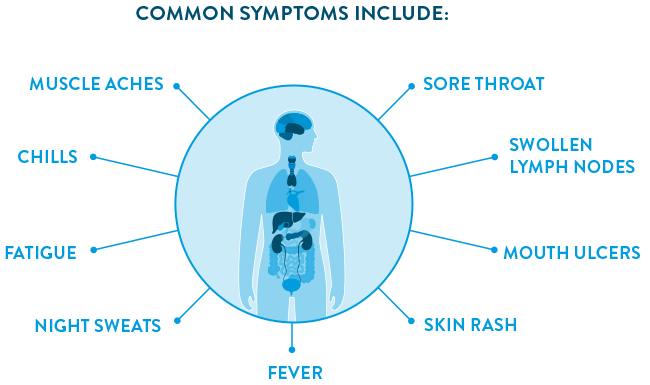Global point of care



HIV: Timely Testing & Prevention
HIV symptoms can vary from person to person.
Some people experience symptoms almost immediately and others do not experience symptoms for many years. Timely detection of HIV allows for better treatment outcomes and reduces the risk of transmission. People living with HIV who receive effective treatment can live long, healthy lives while protecting their partner.
Understanding HIV
What is HIV?
Human immunodeficiency virus (HIV) is a virus that attacks the immune system and weakens the body’s ability to fight everyday infections and disease. Unlike other viral infections, HIV never leaves the body and progresses over time. While there is currently no cure, our evolving understanding of HIV, partnered with advances in medical treatment and testing, can empower people living with HIV to live long, healthy lives.
How is HIV diagnosed?
Knowing your HIV status allows you to make life-affirming decisions for yourself and your loved ones. The only way to know your status is through an HIV test. If you believe you have been exposed to HIV, seek medical advice as soon as possible.
HIV by the Numbers in 20221
- Over 39 million people globally were living with HIV
- Of those people, 5.5 million (14%) did not know they were living with HIV
- There were 1.3M new infections
- 76% of people living with HIV had access to antiretroviral therapy


Understanding Symptoms
Most people experience flu-like symptoms within 2-4 weeks after transmission. These symptoms may last for a few days or even several weeks. However, some people experience no symptoms at all. This is why timely and regular testing is so important.

Testing is the Key
HIV is preventable and there are several steps you can take to minimize risk and stop the spread of the virus:
- Avoid sharing needles or other injection equipment
- Use internal and/or external condoms correctly during any sexual encounter
- Talk to your doctor about prevention medicines like PrEP (pre-exposure prophylaxis) and PEP (post-exposure prophylaxis)
- Get tested annually to know your status
Identifying HIV early not only facilitates fast and appropriate follow-up treatment – it helps to prevent further transmission of the disease.
Testing Solutions
You can get tested for HIV in several places, including your local healthcare provider or sexual health clinic and even from the comfort and privacy of your own home.
Common HIV Test Types2
Antibody
Antibodies are produced by your immune system when you’re exposed to viruses like HIV. An antibody test looks for antibodies to HIV in your blood or saliva. Most rapid tests and HIV self-tests are antibody tests.
Antigen/Antibody
Antigens are foreign substances that cause your immune system to activate even before antibodies develop. An antigen/antibody test looks for these in your blood are most often done in a clinical lab setting.


Testing Solutions
You can get tested for HIV in several places, including your local healthcare provider or sexual health clinic and even from the comfort and privacy of your own home.
Common HIV Test Types
Antibody
Antibodies are produced by your immune system when you’re exposed to viruses like HIV. An antibody test looks for antibodies to HIV in your blood or saliva. Most rapid tests and HIV self-tests are antibody tests.
Antigen/Antibody
Antigens are foreign substances that cause your immune system to activate even before antibodies develop. An antigen/antibody test looks for these in your blood are most often done in a clinical lab setting.


frequently asked questions
What events put me at high-risk for contracting HIV?
HIV is found in certain bodily fluids of people living with HIV including blood, semen, vaginal and rectal fluids, and breastmilk. HIV can be transmitted by:
- Unprotected anal or vaginal sex
- Sharing contaminated substance injection equipment
- Sharing contaminated sex toys
- Accidental needle stick injuries among health workers
- Receiving unsafe injections, blood transfusions or tissue transplantation
- Pregnant people can pass the virus to their children during pregnancy
How long does it take for the HIV virus to manifest?
The “window period” refers to the time between exposure and when a test can detect the HIV virus in your body and is dependent on which type of test is used:
- Rapid Antibody/Antigen test – 18-90 days after exposure
- Antigen/antibody LAB test – 18-45 days after exposure
- Nucleic acid test (NAT) – 10-33 days after exposure
What are the first symptoms of HIV?
A few weeks after exposure you may develop flu-like symptoms including:
- Fever
- Headache
- Sore throat
- Swollen lymph nodes
- Skin rash
Symptoms may last up to a month or not occur at all. If you believe you’ve been exposed – get tested.
What happens after diagnosis?
After receiving an HIV positive test result, talk to your healthcare provider as soon as possible to discuss next steps and treatment options. They may start you on an HIV treatment called antiretroviral therapy (ART) which has proven benefit when people start treatment soon after diagnosis.3
Stages of HIV?
Without proper treatment, HIV typically progresses through three stages.3 However, advances in HIV treatment can slow and even prevent further progression. Take control of your health and know your status.
Stage 1: Acute HIV Infection
Often accompanied by flu-like symptoms, people at this stage have a large amount of the HIV virus in their blood and are very contagious.
Stage 2: Chronic HIV Infection
Sometimes called asymptomatic HIV infection, people at this stage may not have any symptoms but can still transmit HIV. When taking treatment as prescribed, these people may never move into Stage 3.
Stage 3: Acquired Immunodeficiency Syndrome (AIDS)
The most severe stage of HIV, people in Stage 3 have badly damage immune systems and may easily transmit HIV to others. The chances of contracting other opportunistic infections or serious illness is much higher.
Find out more about accurate and easy-to-use tests.


Find out more about accurate and easy-to-use tests.




